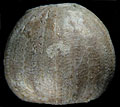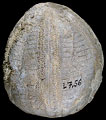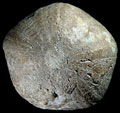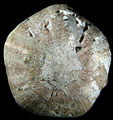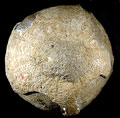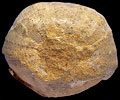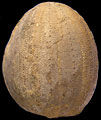The Echinoid Directory
Leiopedina tallavignesi Cotteau, 1856
| Diagnostic Features |
|
|---|---|
| Distribution | Eocene, Spain, France. |
| Type | |
| Classification and/or Status | Species of Leiopedina |
| Remarks | The tubercles are very definitely perforate and so small that crenulation if present is almost obsolete (in all cases I have not seen definite evidence of crenulation. The ambulacral plate compounding is arbacioid or diadematoid. Leiopedina differs from Codechinus only in having perforate tubercles. |
